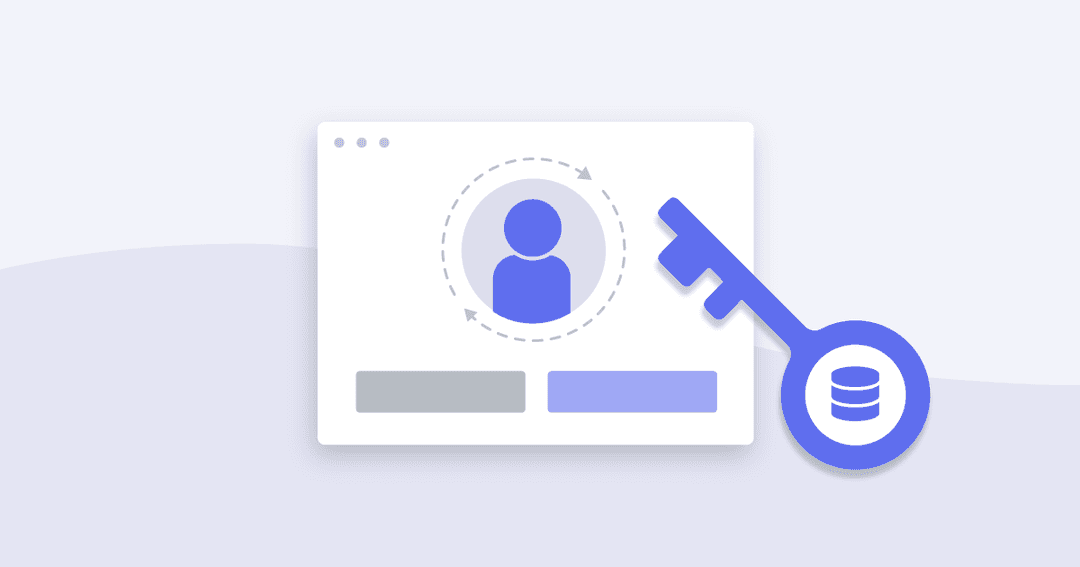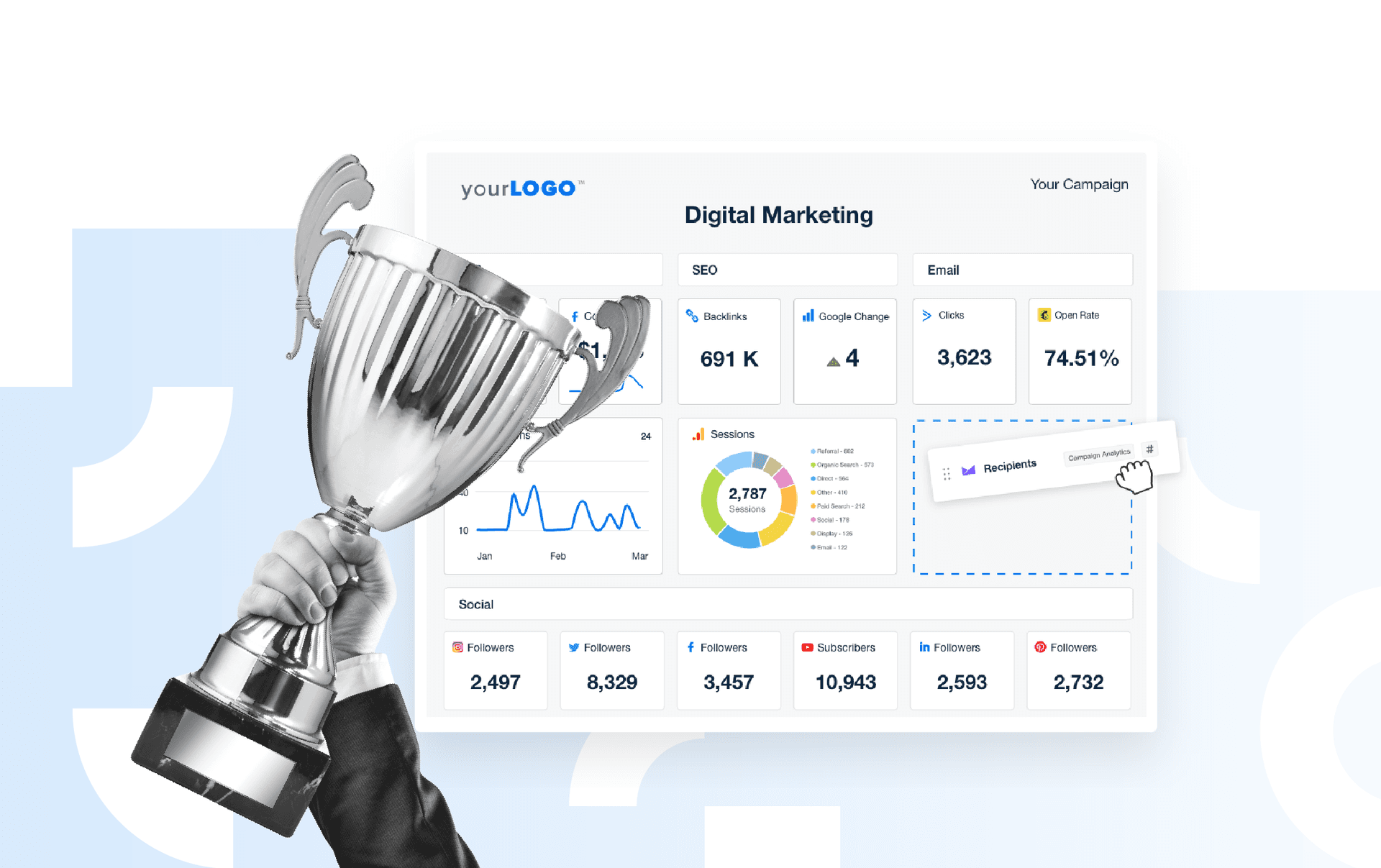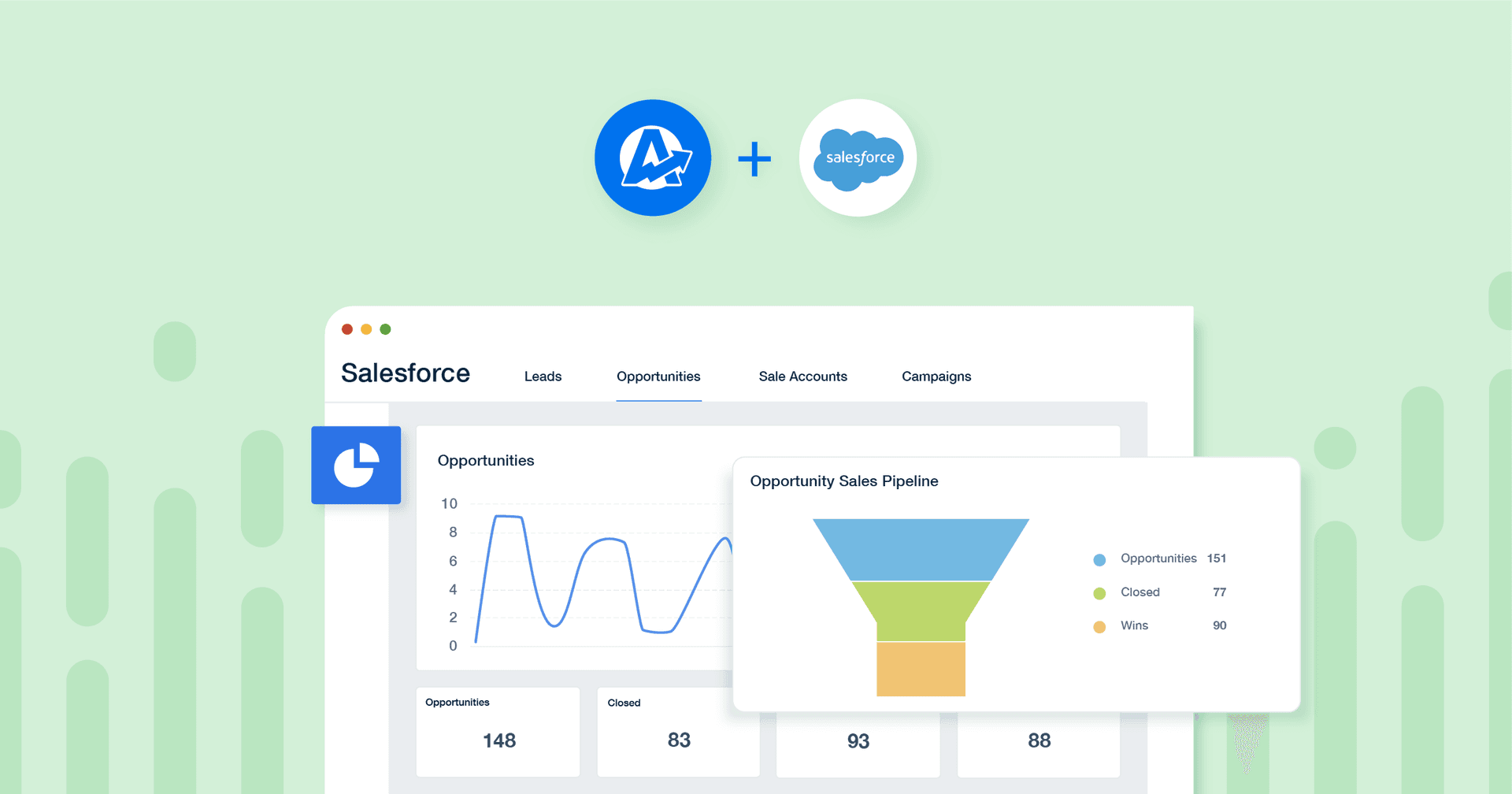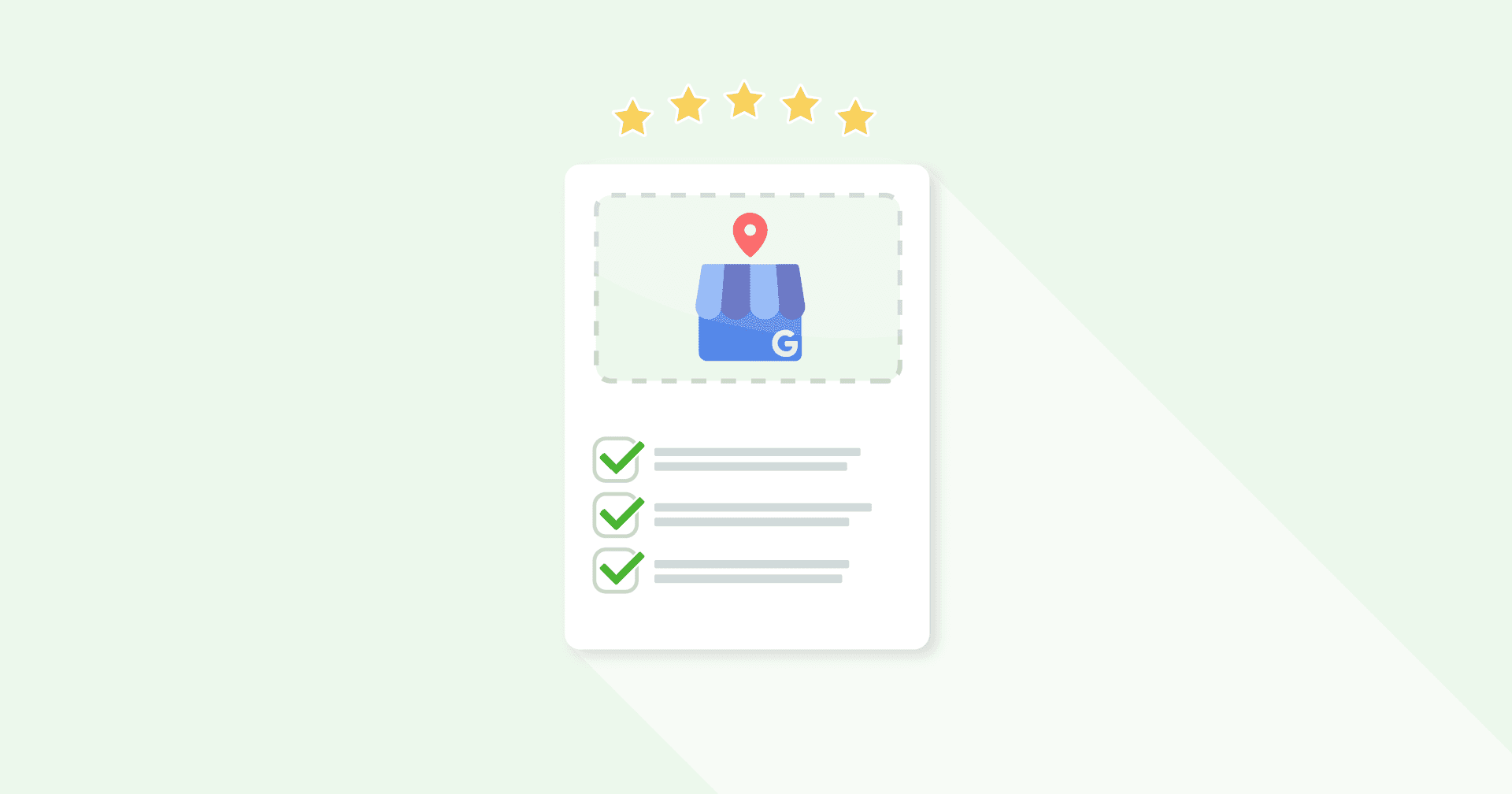Table of Contents
Table of Contents
- What Is Zero-party Data?
- What Is the Difference Between First, Second, Third-Party Data?
- Why Is Zero-party Data Important?
- Some Benefits of a Zero-party Data Strategy
- Privacy and Cookies: A Changing Landscape
- Types of Zero-party Data Your Agency (or Client) Should Be Collecting
- Examples and Ideas for Zero-party Data Collection
- Best Tools to Collect & Use Zero-party Data
- How Agencies Should Use Zero-Party Data
- Summary: Don’t Be the Last to the Party
7,000+ agencies have ditched manual reports. You can too.
Free 14-Day TrialQUICK SUMMARY:
Zero-party data refers to information that consumers willingly share with businesses, marking a shift towards more transparent and consent-based data collection practices. This type of data is especially useful for email engagement, providing insights directly from the source. It helps agencies create highly tailored content that resonates with individual preferences.
While first, second, and third-party data are the most well-known, there’s a new data type in town that’s building some significant buzz: zero-party data. With personalized customer experiences more important than ever to create a seamless online shopping experience, agencies and brands are using zero-party data more and more. Zero-party data has a host of benefits in terms of customer satisfaction and retention. That's why Agencies need to get on board the zero-P train–or risk getting left at the data collection station.
What Is Zero-party Data?
Zero-party data is information that is voluntarily and deliberately shared with a website or business. Zero-party data is the fashionably-late newcomer to the data collection party, but it’s not so much its own distinct category as it is a more in-depth form of first-party data. (Whether that warrants its own category or not is still up for debate.) An example of first-party data is liking a particular Spotify playlist, whereas an example of zero-party data is setting your music genre preferences when signing up to the app.
What Is the Difference Between First, Second, Third-Party Data?
The difference between first and zero-party data is that, unlike some types of first-party data where you’re analyzing user behavior and trying to glean insights from it, zero-party data is willingly shared by the user.
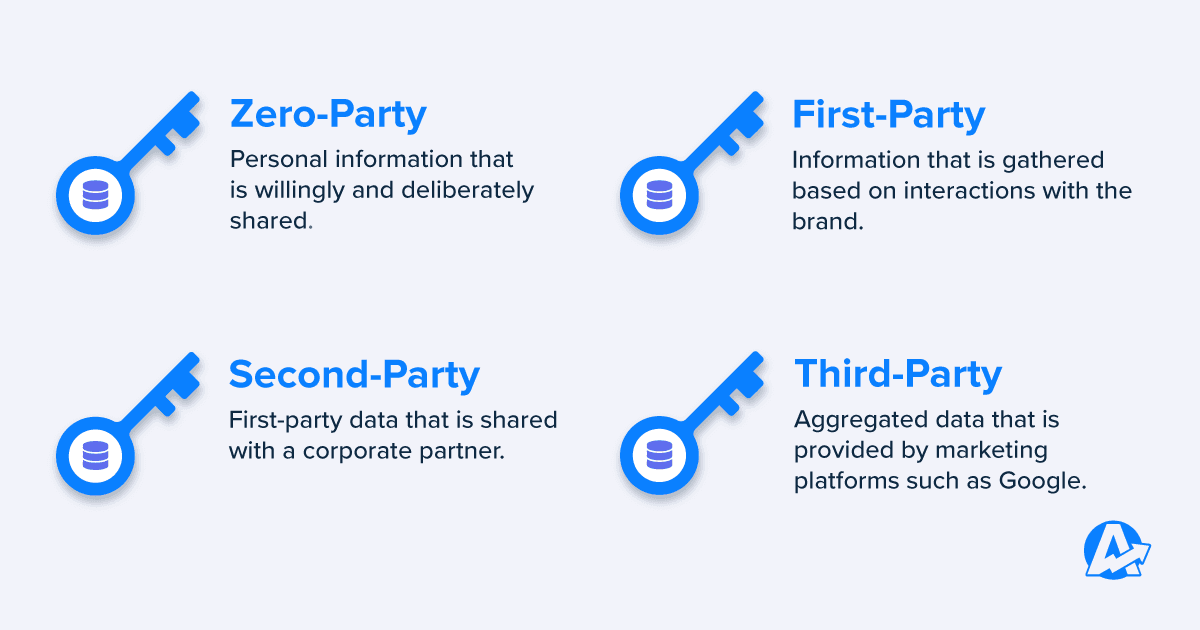
In a previous article, we discussed how first-party data comes directly from customers – from observing their behavior on your clients’ websites. Agencies and their clients like first-party data for its accuracy, cost-effectiveness, and opportunities to personalize. Think: a customer’s social media activity, purchase history, or website activity can help agencies glean valuable insights into the buyer’s preferences and their eventual purchase journey.
On the other hand, second-party data is collected by a business and then shared with other companies. It’s essentially first-party data that has been repackaged and sold. An example might include a grocery store selling its loyalty data to a credit card company.
Lastly, third-party data is collected across various platforms by–you guessed it–a third party (i.e. a marketer) and put together to create aggregate marketing data. That data is then processed into “audience profiles” before being sold to other companies. Examples might include commercial data sets concerning weather or demographics, or campaign conversion data where you can see how many users converted but not the personally identifiable customer data.
Here’s a summary of the four types of data:
Zero-party data | First-party Data | Second-party Data | Third-party Data |
Direct customer relationship | Direct customer relationship | Indirect customer relationship | Indirect customer relationship |
Collected with consent | Collected with consent | Collected with consent | Unknown if it’s collected with consent (depends on the data provider) |
Individual data | Individual data | Individual data | Aggregate Data |
High accuracy and reliability | High accuracy and reliability | High accuracy and reliability | Low accuracy and reliability |
Not shared | Not shared | Shared only with trusted partners | Shared with many companies |
Examples: – Items in Wishlist – Customized account configurations – Product preferences | Examples: – Phone number – Purchase history – Support history – Loyalty program info | Examples: – Website activity – Social media profiles used – Customer feedback – Customer surveys | Examples: – Age – Income – Education – Websites visited – Survey responses |
Why Is Zero-party Data Important?
Zero-party data empowers consumers by leaving it up to them to share what they want. And first-party data (of which zero-party data is a part) also allows agencies like yours to get the kind of insights that give brands real control over their commercial destiny. For customers, providing zero-party data is a way that they can feel actively involved in their customer experience, which provides a great opportunity for marketing agencies to create stronger connections between brands and consumers.
Signal reports that first-party data “garners the highest return on investment of any data type, with the potential to do more,” and that two-thirds of marketers (or more) “believe that first-party data provides the best path to true customer understanding and therefore to better performance.” It is safe to say that this type of consumer data isn’t going anywhere, especially as more and more third-party data gets phased out.
Some Benefits of a Zero-party Data Strategy
When it comes to the benefits of a zero-party data strategy as a whole, there are several. For example:
The ability to customize your clients’ messaging and experiences for each specific customer.
The data is willingly supplied by the user, showing a higher level of engagement with the brand.
The potential of getting new ideas for content creation, since you’re hearing about specific pain points/customer insights.
Having a deeper understanding of who your clients’ customers actually are, and what categories they fit into.
These benefits show the importance of zero-party data in your overall marketing strategies.
Privacy and Cookies: A Changing Landscape
There’s an increasing importance placed on privacy when it comes to consumer data. And when it comes to third-party cookies, the writing is on the wall: they’ll be leaving soon, and marketers need to readjust their strategies as necessary.
First-party data (and zero-party data along with it), offers an answer to the question: “With third-party cookies set to be phased out, how will your agency be compensating?” Keep in mind that first-party cookies aren’t going anywhere, so you’ll still have some important data coming in regardless.
Types of Zero-party Data Your Agency (or Client) Should Be Collecting
Contact Information That Goes Beyond the 1st Party
Typically, a current/future customer’s name, email address, and phone number are considered first-party data. However, going one step further by asking for their preferred pronouns, contact method, or even the time of day or day of the week they’d like to be contacted can be considered zero-party data.
Personal or Business Goals
Another interesting form of zero-party data is collecting a customer’s actual goals. These could range from “scale my business” to “exercise more regularly” – whether business or personal. Such data is like gold because it gives you a real look into your customers’ pain points and personal situations.
Product Preferences
You can also collect product preferences, depending on the types of products your client sells. A jewelry store might like to know if a customer prefers silver or gold; a phone case brand might like to know if a customer uses Android or iOS devices; a makeup brand might like to know if a customer is clean-beauty-obsessed or not.
Wishlists
Perhaps one of the most valuable forms of zero-party data out there is wishlists. These are curated lists of your customers’ favorite products, making it a perfect opportunity to get a sense of their style, preferences, and general budget. Amazon does a great job of this with their AI-powered homepage, forever reminding you of what you were saving/looking at last so that you can keep shopping seamlessly.

Purchase Timeline
Another interesting type of data you can collect – perhaps in a quiz, intake form, or survey – is your customers’ purchase timeline: Are they looking to purchase today? This week? This month? This year? This is precious information, as you can later retarget at the corresponding times. It can also help your sales team determine which leads to follow up with first, and which can be added to a nurture stream to keep them warm until the time is right.
Examples and Ideas for Zero-party Data Collection
Also known as “declared data,” these are some of the ideas for zero-party data collection that are recommended for and by marketing agencies:
New User Registration
When a new customer signs up or registers for an account with your client, there’s plenty of data available to collect. Standard examples might include the customer's name, contact details, age, gender identity, or region. But you can go one step further by asking questions about their personal style, product preferences, or audience segment (i.e. “new mamas” or “expecting parent”).
Preference Center Data
Another area for collecting zero-party data is in a customer’s preference center. Here, you can get insights on what type of communication they prefer – SMS vs. email, for example – or even categories – like that they prefer Product Tips but not Marketing Updates – which can provide great information in terms of the best way to retarget them.
Personality Quizzes/Assessments
Some fun ways to collect zero-party data are personality quizzes or assessment tools. These free and engaging tools provide your client with important information in a way that the customer actually enjoys. Think Buzzfeed-style quizzes like “Which Jewelry Icon Are You?” that ask for a customer’s favorite colors, styles, and celebrities to give a personalized answer. (Bonus points if you remind them to share their result on social media to spread brand awareness, too!)
Surveys
Similar to the previous item, surveys offer a chance to dig deep into your customers’ thinking patterns. Offer an incentive (like a chance to win a gift card or other prize) to get the most answers possible. In the answers, you’ll find valuable data given to your client practically for free. You can ask for things like their opinion regarding your clients’ brand, their customer service experience, or what else they’d like to see offered by the company in the future. Zero-party data is one of the greatest sources of qualitative data if used correctly.
Birthday Gifts
You can also ask customers for their birth date in return for a special birthday surprise. Sephora is perhaps the most well-known company for doing this: Each year, during their birthday month, members stop by the store to pick up their exclusive (and free!) gift sets, which rotate each year. The benefits for Sephora? They get the customer’s birthday info, but also pull them into the store where new products can catch their eye on the way to the checkout counter.
Fun, User-centric Polls
Social media is an easy way to get this kind of zero-party data: Simply post an Instagram Story with a quick poll to get a pulse check on your clients’ audience. Ask for things like: their favorite seasons, favorite colors, favorite styles, or beyond. Though informal, these quick polls can give you some great inspiration for new launches.
User Reviews
Another way to connect offline behavior to an online profile is by including a request for a review of their product. A personalized note – handwritten, if possible – can help your clients’ brands stand out and garner more authentic reviews online.
Checkout Questions (In-person or Online)
Ever been asked for your ZIP code while in the checkout line? That’s a perfect example of a company gathering zero-party data. But be careful about trying to gather too much additional information during checkout, as you don’t want the focus on acquiring data to negatively impact the checkout process itself.
Coupon Offer Popups
Last but not least, coupon offer popups are a final way to collect zero-party data. Although they may seem annoying when you’re shopping online and being bombarded by them, as a company, they still hold value. By offering something like 10-15% off the first purchase, your clients can, in exchange, get key information on their customers/users. The most common data that is asked for is an email address, but you can always ask for more!
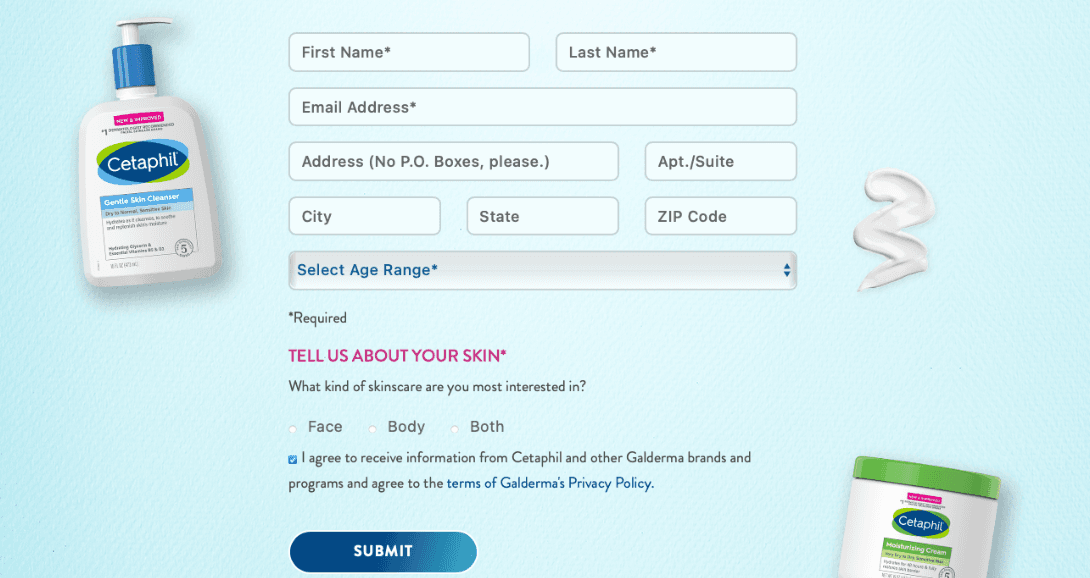
After clicking a promotional pop-up, Cetaphil asks for a whole host of information, especially what kind of skincare the customer is most interested in. This provides more valuable consumer data for later retargeting.
Best Tools to Collect & Use Zero-party Data
When it comes to collecting and putting zero-party data to the use, there are plenty of tools available to help gather and act on the data. From email surveys to on-page popups, to email automation sequences, to optimized shopping experiences, to social quizzes, here are just a few of the online tools that are doing an excellent job of leading the zero-party train.
How Agencies Should Use Zero-Party Data
So, we’ve covered what zero-party data is, what its benefits are, and practical examples of what it can look like. But as a marketing agency, you also need to know the how. Here are some practical ways that you can leverage zero-party data for your clients:
Leveraging a quick quiz/survey to provide a better website experience (think: asking for the customer's country/gender identity to personalize the products displayed on their next visit)
Asking questions about product preferences to feature the right products/product lines (think: answering questions about makeup style to get served up the ideal lipstick shades)
Personalizing a specific offer (think: offering discounts/special offers to frontline/healthcare workers)
Leverage zero-party data, like wish lists, to create more effective marketing campaigns.
Try offering something like a “dynamic gift guide” to help customers shop better through provided preferences.
Use zero-party data that has been collected over time to optimize paid campaigns using demographic, geographic, and other segmentation options.
Identify and develop strategic partnerships with companies where the target audience or interests align.
These are just a few examples of how you can take zero-party data and run with it for your agency’s clients.
Summary: Don’t Be the Last to the Party
Zero-party data may be a newer concept in the data collection world, but that doesn’t mean it’s not as important. A key type of first-party data, it offers a unique way for your clients to interact with their customers.
Remember the key differences between zero, first, second, and third-party data:
Zero-party data = Collected from a customer who has willingly shared it
First-party data = Collected by observing behavior directly
Second-party data = Collected by a company, but then shared with a third party
Third-party data = Collected across platforms and then aggregated
With third-party data’s importance & availability waning, it’s time to look to the future of data collection: first-party, and more specifically, zero-party data.
Your agency doesn’t have to dive all the way into the Zero-pool-party, you can dip your toes by slowly collecting smaller amounts of zero-party data and building each customer profile one piece at a time.
Try an exit survey to find out why potential customers didn’t purchase from the client and add a few interest-based questions in the mix and you’re on your way to building a zero-party data strategy.
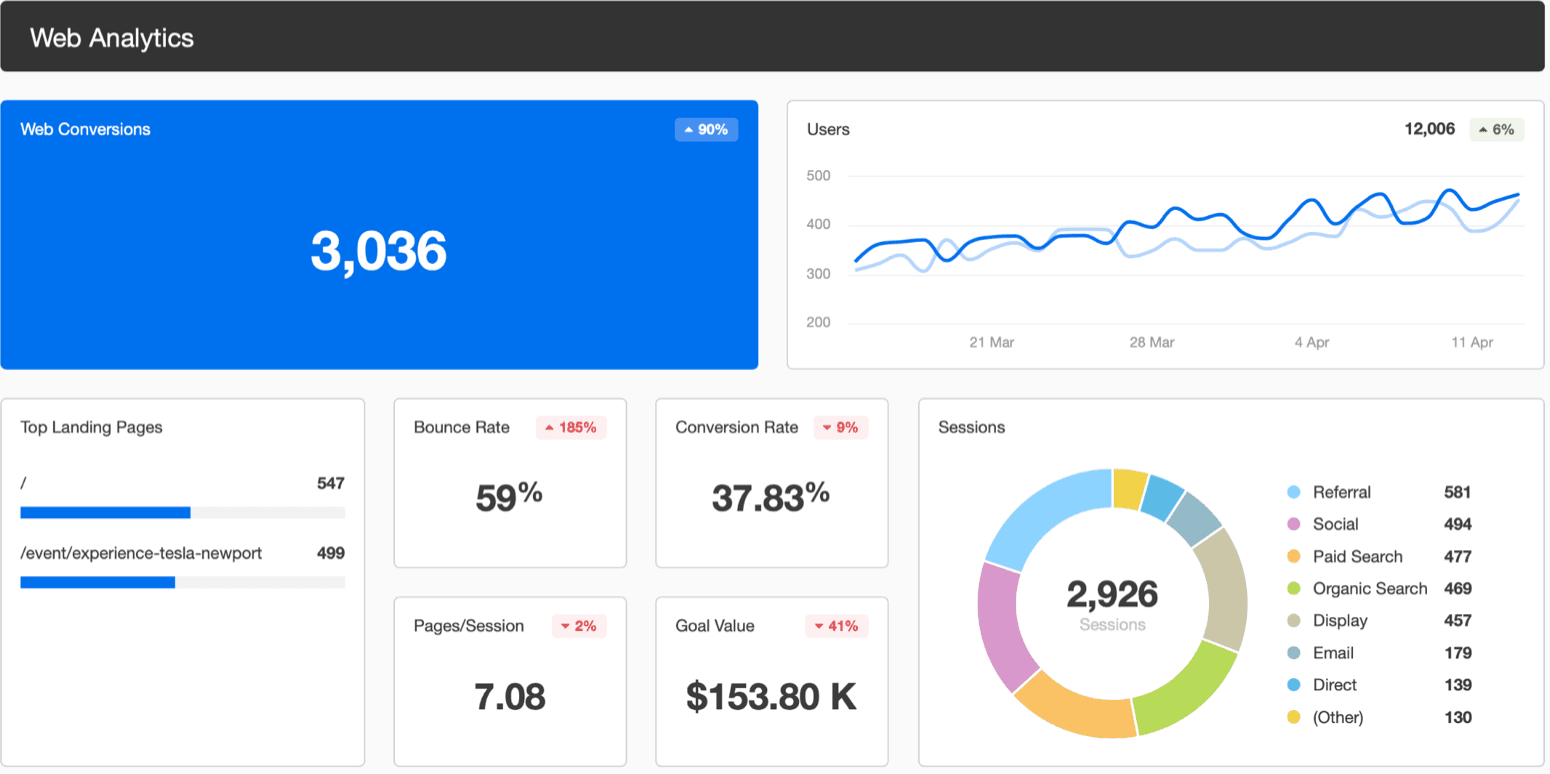
Data is power. Track all your clients’ marketing metrics under one roof with AgencyAnalytics. Start your free trial today.

Written by
Mercedes Killeen is an author, writer, editor, and marketer based out of Toronto. She got her start in poetry, but these days, she's spending more time in SaaS roles.
See how 7,000+ marketing agencies help clients win
Free 14-day trial. No credit card required.



